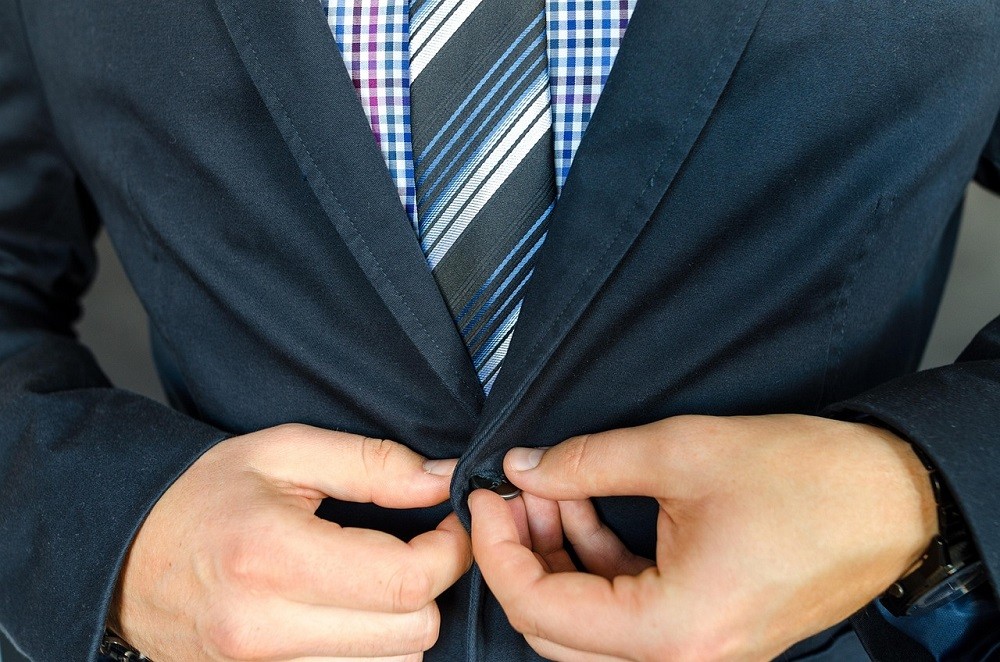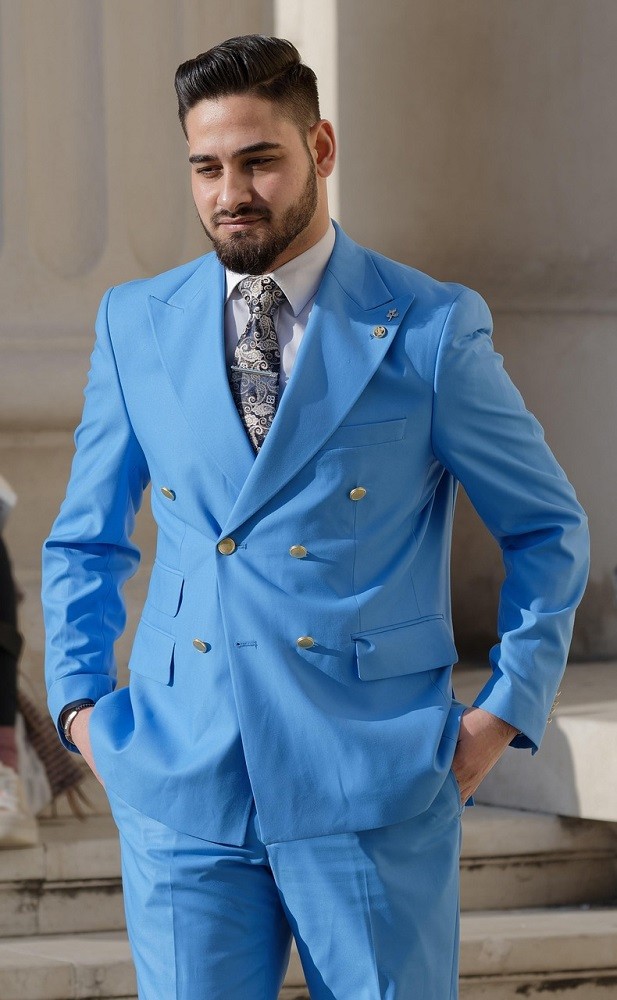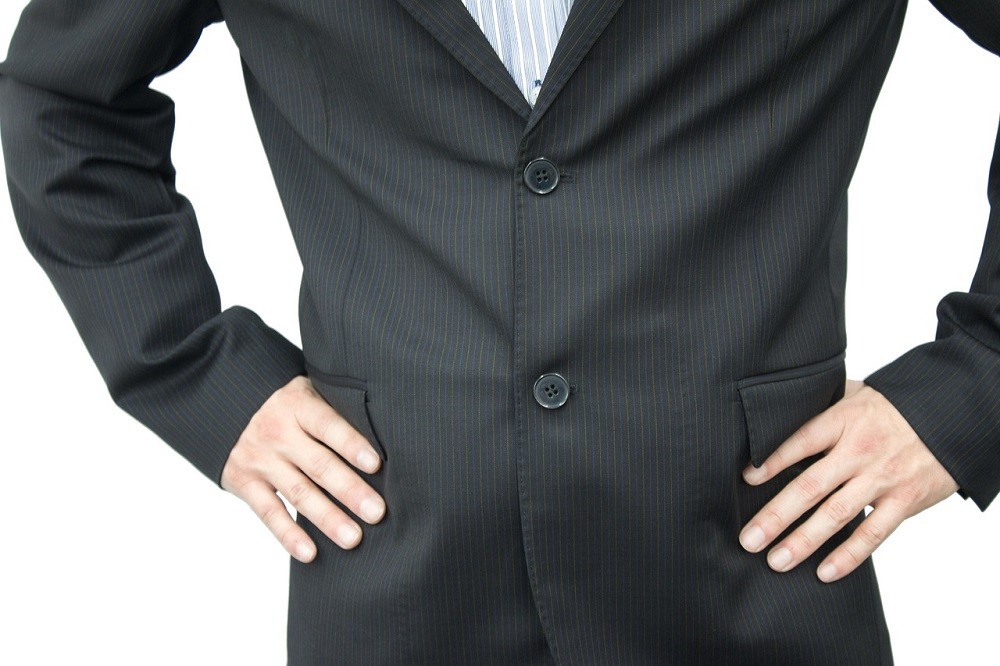The Esteemed Gentleman Articles
Suit Up Right: Button Rules For Modern Gentlemen
Buttoning a suit is an easy skill that every style-savvy gentleman should know. Incorrect buttoning tells others that you may not care about your appearance or that you are unaware of this timeless style rule. Here are the button rules you need to know next time you suit up:
What Is The Correct Way To Button A Suit?
Suits come in two categories: single-breasted and double-breasted. To easily distinguish them, remember that single-breasted jackets only have one row of buttons while double-breasted jackets have two rows.
The number of buttons on the suit jacket determines how it should be buttoned up. Here are the four main types of button stylings you will see on suit jackets today:
Note: These buttoning rules and tips also apply to any and all types of tailored jacket, not just suits. Learn more about tailored jackets in our article Elevate Your Style: The Must-Have Jacket Every Man Needs.
How To Button A Single-Button Suit
As a main part of a tuxedo, single-button suit jackets are often exclusively reserved for black- and white-tie occasions. The rule for buttoning and unbuttoning a single-button suit jacket is simple: have the single button buttoned when standing and unbuttoned when sitting.
Single-button suit jackets are becoming a popular choice for younger men who want to break free from the two- and three-button varieties that have been a mainstay in men's style for decades. Whether they catch on or become a fad, like skinny ties, only time will tell.
How To Button A Two-Button Suit
Two-button suit jackets are the most common style of formal jacket in menswear today. Not only are they versatile and flattering for most body types, but they have remained a timeless staple in men's style throughout the decades.
When buttoning a two-button suit jacket, remember that only the top button should be done up when standing. Both top and bottom buttons should be undone whenever you are seated. This will prevent the jacket from wrinkling and prevents strain on the buttons.
How To Button A Three-Button Suit
While not as popular as two-button suit jackets, three-button variants are a good choice for taller men or those desiring a more conservative appearance. With a higher button placement than two-button suit jackets, three-button jackets help create a more rectangular, uniform silhouette rather than an hourglass shape like the one- and two-button styles.
The rule of thumb for buttoning a three-button suit jacket is "sometimes, always, never": The top button is sometimes buttoned, the middle button always is, and the bottom button never is. When seated, you can keep the top and middle buttons buttoned, but it is not necessary.
We recommend buttoning the top for more formal occasions and leaving it unbuttoned for semi-formal and smart-casual events.
How To Button A Double-Breasted Suit
Double-breasted suit jackets have two rows of buttons instead of one, hence the name "double-breasted". Double-breasted suits are considered formal due to the overlapping fabric and larger silhouette. They are often worn by someone who wants to make a statement or appear more powerful.
Double-breasted suit jackets often come with four or six buttons, although you may occasionally see eight. If you take a look at the tag of a double-breasted suit, you will see a style number like 6x2, 6x1, 4x2, or 4x1. The first number indicates the number of buttons sewn on to the suit jacket, and the second number indicates the number of buttons that can actually be buttoned.
When wearing a double-breasted suit jacket, it is common to leave the bottom button undone. If you are new to double-breasted suits, only button the top-most button you can, or the middle if you have 6 buttons.
Where Did This Suit Buttoning Rule Come From?
Leaving the bottom button on a suit jacket undone traces its roots to the rather portly King Edward VII in the 19th century. After meals, he would often undo the bottom button of his waistcoat, allowing him to relax more comfortably while seated at the dining table.
Other people seated nearby him began copying him and soon almost everyone within the kingdom was doing it. This became such a trend that it caught on with the public and eventually became a tradition we still follow today.
Why Should You Leave The Bottom Button Undone On A Suit?
Leaving the bottom button undone on a suit jacket lets the jacket drape naturally, creating a clean silhouette. Depending on the cut of the suit jacket, this can help enhance the V-like shape of your upper body, make you appear leaner, or help create a uniform look from head to toe.
Having the bottom button undone also gives you more range of motion should you need to bend down to tie your shoes, pick up something off the ground (like someone's wallet), or run to catch your bus.
Doing this also shows that you are aware of tradition and style rules.
When Is It Acceptable To Unbutton Your Jacket?
Aside from sitting, there are a few other instances when it is acceptable to have your suit jacket completely unbuttoned. Be aware that doing this will look more casual, so we advise against it if you are at a formal gathering or a black- or white-tie gala.
In Hot Weather
It is perfectly acceptable to undo all the buttons on your suit jacket to cool off, especially if you live in a warm climate or are wearing a suit jacket made of wool, tweed, or another thick material.
We recommend investing in suit jackets made from linen, cotton, seersucker, and lightweight wool for warm months.
When You Want To Dress Casually But Still Look Somewhat Professional
Undoing all the buttons on a suit jacket is considered casual. There's nothing wrong with it at all. It is similar to loosening your tie knot after a long week at work or wearing a leather jacket completely unzipped. It conveys a carefree look but still shows that you mean business when you need to be serious.
We always recommend dressing above what the occasion calls for as it is easier to remove layers than add them. If you unbutton your suit jacket when no one else around you is wearing one, you will look casual but will still be the best-dressed man in the room.
Summary
Knowing how to button a jacket properly displays your sartorial knowledge and attention to timeless style. Once you follow this rule, it will feel natural. Soon, you will notice all the suit buttons and quickly recognize who knows the rule and who doesn't.
For more helpful tips and advice on style and attire, read these articles:
When you subscribe to the article, we will send you an e-mail when there are new updates on the site so you wouldn't miss them.











Comments